皆さんへ、
明けましておめでとうございます!!!
来週クラスをやりなおします。
Everyone,
Happy New Year!
Lesson shall resume from next week ^^
Welcome to my mini Japanese revision corner. ミニの日本語を復習する角へよこそ!
Monday, December 31, 2012
Tuesday, December 25, 2012
メリークリスマスー
皆さんへ、
メリークリスマスーお目出度うご座います。
Everyone,
Merry Xmas to all!
メリークリスマスーお目出度うご座います。
Everyone,
Merry Xmas to all!
Sunday, December 2, 2012
Current JLPT scoring system (from 2010)
JLPT scoring system from 2010
| Level | Total score | Scores by Scoring Sections | ||||||
|---|---|---|---|---|---|---|---|---|
| Language Knowledge (Vocabulary/Grammar) | Reading | Listening | ||||||
| Range of scores | Overall pass marks | Range of scores | Sectional pass marks | Range of scores | Sectional pass marks | Range of scores | Sectional pass marks | |
| N1 | 0~180 points | 100 points | 0~60 points | 19 points | 0~60 points | 19 points | 0~60 points | 19 points |
| N2 | 0~180 points | 90 points | 0~60 points | 19 points | 0~60 points | 19 points | 0~60 points | 19 points |
| N3 | 0~180 points | 95 points | 0~60 points | 19 points | 0~60 points | 19 points | 0~60 points | 19 points |
| Level | Total score | Scores by Scoring Sections | ||||
|---|---|---|---|---|---|---|
| Language Knowledge (Vocabulary/Grammar)・Reading | Listening | |||||
| Range of scores | Overall pass marks | Range of scores | Sectional pass marks | Range of scores | Sectional pass marks | |
| N4 | 0~180 points | 90 points | 0~120 points | 38 points | 0~60 points | 19 points |
| N5 | 0~180 points | 80 points | 0~120 points | 38 points | 0~60 points | 19 points |
Just a side note that one is not required to score well on each sectional pass as compared to previous format of JLPT. Previous format requires examine to achieve at least 50% passing grade per section. However the examine MUST pass the overall pass marks and sectional pass marks requirement for each paper.
Meaning if one might be weak in reading and managed to scrape through the sectional pass for language knowledge but very strong in listening and ace the listening section, one can still pass the JLPT exams.
Wednesday, September 5, 2012
Do you know...
- Singapore and Tokyo are 5,320km apart?
- Singapore and Tokyo are not in the same time zone? Singapore is GMT +8 while Tokyo is GMT +9.
- flying from Singapore to Tokyo takes around 7 hours while flying from Tokyo to Singapore takes around 8 hours?
- Singapore have tropical rainforest climate while Japan have temperate climate of 4 seasons?
- Singapore's tallest hill is Bukit Timah hill (164m) while Japan's tallest mountain is Mt. Fuji (3,776.24m) ?
Wednesday, August 29, 2012
Japanese Poetry
Waka (Japanese poetry) originally encompassed a veriety of forms, such as choka, tanka and sedoka, but tanka gradually become the predominant form until, from Heian Era (late 8th centuy), the term waka came to be considered synonymous with tanka.
Tanka is one form of waka, consisting of five lines of 5, 7, 5, 7 and 7 syllables. It is said that for a Japanese, this is the most natural length for a lyric poem poem expressing emotion. The first three lines of 5, 7 and 5 syllables are known as kami no ku (upper poem" and the remaining two lines of 7 and 7 syllables are known as shimo no ku (lower poem).
As a short form of lyric poetry, tanka stress the beauty of life and nature, and a feeling of yearning is an important element of tanka. What is sought within this simple form is to express the essence of the yearning with a depth in which all the emotions are intermingled. The vivid expression of that which has touched the heart has the power to evoke a wealth of associations. This allusive feeling contained in these 31 syllables is referred to as yojo. In content, tanka poem should include this yojo.
An example of tanka
難波津 (和歌)
難波津に na ni wa tsu ni
咲くやこの花 sa ku ya ko no ha na
冬ごもり fu yu go mo ri
今は春べと i ma ha ha ru be to
咲くやこの花 sa ku ya ko no ha na
Aside from Tanka, there's also Haiku which is a fixed shorter verse form of seventeen syllables arranged in a 5-7-5 pattern.
Basho Matsuo, in the middle of the Edo period (late 17th century), give independent life to the hokku (opening verse) of the haikairenga (linked verse), and establised it as an art form dealing with life and nature, using aesthetic values such as austere elegance called, sabi, shiori, in which there is natural expression of delivate beauty, and karumi, which seeks a refined interest in plain everyday material.
General use of the name "haiku" for this form began with Shiki Masaoka, in the 3rd decade of Meiji Era (end 19th century).
A feature of haiku is inclusion of a "season word" referring to an animal, plant, event or custom of the season. For example, the season word sumireso (violets) will bring to mind the warmth of spring and violets in bloom along a mountain path. Thus, breadth and depth is given to haiku, the shortest of poems. Haiku give an obhetive, fleeting picture of its subject. As it is impossible to depict an actual scene in detail, it is necessary to abbreviate to the essentials, and the season word is one such abbreciation.
An example of haiku
古池 (俳句)
古池や fu ru i ke ya
Tanka is one form of waka, consisting of five lines of 5, 7, 5, 7 and 7 syllables. It is said that for a Japanese, this is the most natural length for a lyric poem poem expressing emotion. The first three lines of 5, 7 and 5 syllables are known as kami no ku (upper poem" and the remaining two lines of 7 and 7 syllables are known as shimo no ku (lower poem).
As a short form of lyric poetry, tanka stress the beauty of life and nature, and a feeling of yearning is an important element of tanka. What is sought within this simple form is to express the essence of the yearning with a depth in which all the emotions are intermingled. The vivid expression of that which has touched the heart has the power to evoke a wealth of associations. This allusive feeling contained in these 31 syllables is referred to as yojo. In content, tanka poem should include this yojo.
An example of tanka
難波津 (和歌)
難波津に na ni wa tsu ni
咲くやこの花 sa ku ya ko no ha na
冬ごもり fu yu go mo ri
今は春べと i ma ha ha ru be to
咲くやこの花 sa ku ya ko no ha na
Aside from Tanka, there's also Haiku which is a fixed shorter verse form of seventeen syllables arranged in a 5-7-5 pattern.
Basho Matsuo, in the middle of the Edo period (late 17th century), give independent life to the hokku (opening verse) of the haikairenga (linked verse), and establised it as an art form dealing with life and nature, using aesthetic values such as austere elegance called, sabi, shiori, in which there is natural expression of delivate beauty, and karumi, which seeks a refined interest in plain everyday material.
General use of the name "haiku" for this form began with Shiki Masaoka, in the 3rd decade of Meiji Era (end 19th century).
A feature of haiku is inclusion of a "season word" referring to an animal, plant, event or custom of the season. For example, the season word sumireso (violets) will bring to mind the warmth of spring and violets in bloom along a mountain path. Thus, breadth and depth is given to haiku, the shortest of poems. Haiku give an obhetive, fleeting picture of its subject. As it is impossible to depict an actual scene in detail, it is necessary to abbreviate to the essentials, and the season word is one such abbreciation.
An example of haiku
古池 (俳句)
古池や fu ru i ke ya
蛙飛込む ka wa tsu to bi ko mu
水の音 mi zu no o to
One famous and traditional anthology style of compiling Japanese waka poetry is actually Hyakunin isshu. Hyakunin isshu (百人一首) is a where each contributor writes one poem for the anthology. Literally, it translates to "one hundred people, one poem [each]". It also refers to the card game of uta-garuta, which uses a deck composed of poems from one such anthology.
The most famous hyakunin isshu, often referred to as "the" Hyakunin Isshu because no other one compares to its notability, is the Ogura Hyakunin Isshu, compiled by Fujiwara no Teika (or Sadaie, 1162 – 1241) while he lived in the Ogura district of Kyoto. Teika's anthology is the basis for the card game of karuta, which has been popular since the Edo period.
One famous and traditional anthology style of compiling Japanese waka poetry is actually Hyakunin isshu. Hyakunin isshu (百人一首) is a where each contributor writes one poem for the anthology. Literally, it translates to "one hundred people, one poem [each]". It also refers to the card game of uta-garuta, which uses a deck composed of poems from one such anthology.
The most famous hyakunin isshu, often referred to as "the" Hyakunin Isshu because no other one compares to its notability, is the Ogura Hyakunin Isshu, compiled by Fujiwara no Teika (or Sadaie, 1162 – 1241) while he lived in the Ogura district of Kyoto. Teika's anthology is the basis for the card game of karuta, which has been popular since the Edo period.
Wednesday, August 15, 2012
Learning How to Wear a Yukata
How to Wear Yukata
Hi Folks, it's summer and alot of places in and out of Japan are having summer festival, commonly known as natsu matsuri. With that in mind, it's time for YUKATA! That's right! YUKATA is really something that is associated with SUMMER! So I decided to share my yukata manual for you!
In case you cannot read off the blog pic, please click them instead. The pictures are in pretty sharp resolution as individual.
Names of Yukata Parts:
Wearing Yukata Part 1:
Wearing Yukata Part 2:
Wearing Yukata Part 3:
Typing Obi Part1:
Typing Obi Part 2:
Sunday, July 29, 2012
Gestaltzerfall of Kanji
Gestaltzerfall refers to a psychological phenomenon where delays in recognition are observed when a kanji character is stared at for a while. A study has shown that delays are most significant when the characters are of the same size. When characters to recognize are of different sizes, delays are observed only when they are of different patterns
Extracted from Wikipedia : http://en.wikipedia.org/wiki/Gestaltzerfall
I was talking to my friend over msn when he give me this term along with the meaning on this website: koohi forum topic. In short, this is actually a form of recongised mental blockage due to excessive expourse to a particular kanji. It is quite common among people who is learning Japanese and Chinese. Have you ever suffer from this before? Care to share?
Extracted from Wikipedia : http://en.wikipedia.org/wiki/Gestaltzerfall
I was talking to my friend over msn when he give me this term along with the meaning on this website: koohi forum topic. In short, this is actually a form of recongised mental blockage due to excessive expourse to a particular kanji. It is quite common among people who is learning Japanese and Chinese. Have you ever suffer from this before? Care to share?
Wednesday, July 18, 2012
Introducing my editor/fellow author for article contribution.
I just realised that I'm a pretty ungrateful person as I have totally left credits for my cousin's handiwork for editing out my stuff and inputing her ideas for this blog. ^^,)//
So let's welcome Jiali san! \(^-^)/
Wednesday, July 11, 2012
List of numbers without counters
0 - 零 (ぜろ・れい)・〇(まる)
1 - 一 (いち・ひと[つ])
2 - 二 (に・ふた[つ])
3 - 三 (さん・み[っつ])
4 - 四 (よん・よ[っつ]・し)
5 - 五 (ご・いつ[つ])
6 - 六 (ろく・む[っつ])
7 - 七 (なな[つ]・しち)
8 - 八 (はち・や[っつ])
9 - 九 (きゅう・く・ここの[つ])
~.~.~.~.~.~.~.~.~.~.~.~.~.~.~.~.~.~.~.~.~.~.~.~.~.~.~.~.~.~.~.~.~.~.~.~.~.~.~.~.~.~.~.~.
10 - 十 (じゅう・とお)
20 - 二十 (にじゅう)
30 - 三十 (さんじゅう)
40 - 四十 (よんじゅう)
50 - 五十 (ごじゅう)
60 - 六十 (ろくじゅう)
70 - 七十 (ななじゅう)
80 - 八十 (はちじゅう)
90 - 九十 (きゅうじゅう)
~.~.~.~.~.~.~.~.~.~.~.~.~.~.~.~.~.~.~.~.~.~.~.~.~.~.~.~.~.~.~.~.~.~.~.~.~.~.~.~.~.~.~.~.
100 - 百 (ひゃく)
300* - 三百 (さんびゃく)
600* - 六百 (ろっぴゃく)
800* - 八百 (はっぴゃく)
1,000 - 千 (せん)
3,000* - 三千 (さんぜん)
8,000* - 八千 (はっせん)
10,000 - 一万 (いちまん)
100,000,000 - 億 (おく)
*Special pronunciation.
~.~.~.~.~.~.~.~.~.~.~.~.~.~.~.~.~.~.~.~.~.~.~.~.~.~.~.~.~.~.~.~.~.~.~.~.~.~.~.~.~.~.~.~.
So how to I read numeric value?
For numbers 1-10, just read the 1st hiragana pronunciation in the bracket - ichi,ni,san,yon,go,roku,nana,hachi,kyuu,jyuu....
For numbers that is in between 1-999,999,999, you just need to read according to their value.
For example
341,758,629 - 三億四千百七十五万八千六百二十九
(さんおく よんせん ひゃく ななじゅう ごまん はっせん ろっぴゃく にじゅう きゅう)
Special Pronunciation
1) 百、千、億
For 100, 1,000 and 100,000,000, we will omit out 1(ichi) digit in front.
However, one should take note that for 10,000, it is pronounced as 一万(いちまん).
2) 四、七、九
Usually, one would just pronounce 4,7,9 as よん、なな、きゅう as modern Japanese way of reading. This is to avoid using the pronunciation of し、しち and they can also mean death (死、死地) and pronunciation of く also means suffering(苦).
However, one would use the old reading style for calender date and time.
For example, April, July and September are pronounced as 四月(しがつ)、七月(しちがつ)、九月(くがつ).
3) 三、六、八
This is perhaps some of the most confusing numerical that most non native Japanese learners will have problem memorising. The changing of sounds in 3,6,8 are due to rendaku. It's pretty hard to explain at elementary level by itself.
Sad to say, I can only offer one advise: forced memorisation.
4) 零 or 〇
Both are accepted in modern Japanese speaking. But sometimes, in quick pronunciation by native Japanese for numerical terms, one may use 〇 instead of 零.
However, in written context, only 零 is used.
What is つ?
That's a counter usage. However, there's quite a few counters in Japanese so we will touch on this topic in another post soon :)
1 - 一 (いち・ひと[つ])
2 - 二 (に・ふた[つ])
3 - 三 (さん・み[っつ])
4 - 四 (よん・よ[っつ]・し)
5 - 五 (ご・いつ[つ])
6 - 六 (ろく・む[っつ])
7 - 七 (なな[つ]・しち)
8 - 八 (はち・や[っつ])
9 - 九 (きゅう・く・ここの[つ])
~.~.~.~.~.~.~.~.~.~.~.~.~.~.~.~.~.~.~.~.~.~.~.~.~.~.~.~.~.~.~.~.~.~.~.~.~.~.~.~.~.~.~.~.
10 - 十 (じゅう・とお)
20 - 二十 (にじゅう)
30 - 三十 (さんじゅう)
40 - 四十 (よんじゅう)
50 - 五十 (ごじゅう)
60 - 六十 (ろくじゅう)
70 - 七十 (ななじゅう)
80 - 八十 (はちじゅう)
90 - 九十 (きゅうじゅう)
~.~.~.~.~.~.~.~.~.~.~.~.~.~.~.~.~.~.~.~.~.~.~.~.~.~.~.~.~.~.~.~.~.~.~.~.~.~.~.~.~.~.~.~.
100 - 百 (ひゃく)
300* - 三百 (さんびゃく)
600* - 六百 (ろっぴゃく)
800* - 八百 (はっぴゃく)
1,000 - 千 (せん)
3,000* - 三千 (さんぜん)
8,000* - 八千 (はっせん)
10,000 - 一万 (いちまん)
100,000,000 - 億 (おく)
*Special pronunciation.
~.~.~.~.~.~.~.~.~.~.~.~.~.~.~.~.~.~.~.~.~.~.~.~.~.~.~.~.~.~.~.~.~.~.~.~.~.~.~.~.~.~.~.~.
So how to I read numeric value?
For numbers 1-10, just read the 1st hiragana pronunciation in the bracket - ichi,ni,san,yon,go,roku,nana,hachi,kyuu,jyuu....
For numbers that is in between 1-999,999,999, you just need to read according to their value.
For example
341,758,629 - 三億四千百七十五万八千六百二十九
(さんおく よんせん ひゃく ななじゅう ごまん はっせん ろっぴゃく にじゅう きゅう)
Special Pronunciation
1) 百、千、億
For 100, 1,000 and 100,000,000, we will omit out 1(ichi) digit in front.
However, one should take note that for 10,000, it is pronounced as 一万(いちまん).
2) 四、七、九
Usually, one would just pronounce 4,7,9 as よん、なな、きゅう as modern Japanese way of reading. This is to avoid using the pronunciation of し、しち and they can also mean death (死、死地) and pronunciation of く also means suffering(苦).
However, one would use the old reading style for calender date and time.
For example, April, July and September are pronounced as 四月(しがつ)、七月(しちがつ)、九月(くがつ).
3) 三、六、八
This is perhaps some of the most confusing numerical that most non native Japanese learners will have problem memorising. The changing of sounds in 3,6,8 are due to rendaku. It's pretty hard to explain at elementary level by itself.
Sad to say, I can only offer one advise: forced memorisation.
4) 零 or 〇
Both are accepted in modern Japanese speaking. But sometimes, in quick pronunciation by native Japanese for numerical terms, one may use 〇 instead of 零.
However, in written context, only 零 is used.
What is つ?
That's a counter usage. However, there's quite a few counters in Japanese so we will touch on this topic in another post soon :)
Sunday, July 8, 2012
Inner Elbow
Once during our elementary lesson where we are learning body parts, one of my classmate ask Sensei on the proper term of inner elbow. Sensei could not give a proper term for this (>.<)|||
Interesting enough, I search Yahoo answers and post the question there.
And soon enough someone managed to fill me up with an answer :
While, 肘(ひじ) hiji means elbow. There was an old term for inner elbow call 肘窩(ちゅか) chuka. Modern way of say inner elbow will be 肘の内側(ひじのうちがわ) hiji no uchigawa.
Interesting, isn't it?
Interesting enough, I search Yahoo answers and post the question there.
And soon enough someone managed to fill me up with an answer :
While, 肘(ひじ) hiji means elbow. There was an old term for inner elbow call 肘窩(ちゅか) chuka. Modern way of say inner elbow will be 肘の内側(ひじのうちがわ) hiji no uchigawa.
Interesting, isn't it?
Monday, July 2, 2012
JLPT - Japanese Language Proficiency Test! 日本語能力試験 !
Hi Folks! Its been an interesting and wearying week for me!
Just 2 days ago, I had taken my JLPT N3 @ Singapore exam centre hosted at Singapore Management University (SMU).
So what is JLPT and what does its certification means?
JLPT means Japanese Language Proficiency Test or 日本語能力試験(にほんごのうりょくしけん). It is to assess non Japanese native speakers on their level of proficiency in Japanese.
How hard is JLPT?
Currently, there's 5 levels as compared to 4 levels in 2010. Beginners will take N5 and slowly progress to N1. Which is considered harder than native level. An extra level N3 was inserted in 2010 ( the level that I took 2 days ago) to form the bridge between N4 and N2. JLPT2 (N2) also had the highest failure rates.
As for me, to pass JLPT N1 has been my personal goal. So far, I can say learning Japanese isn't easy as it takes tonnes of practice along with appreciation of Japanese culture to understand the beauty of the language.
How many papers are there in JLPT?
Generally, all JLPTs have 1 listening paper. Lower levels JLPT N5-N3 have 1 vocabulary and 1 grammar paper while higher level JLPT N2-N1 have only 1 paper which combines both vocabulary and grammar together.
How frequent is JLPT examinations conducted?
Generally, it is conducted twice a year - early July and early Dec. However, some overseas exam centres might only conduct it annually.
So it is compulsory to take JLPT?
Nope, it is purely optional but one can take the test at a nominal fees (around SGD50 per level in Singapore but I heard that it is around SGD200 in Japan!). It is highly encouraged for one to take up at least JLPT if they are enrolled in Japanese language school so as to assess their language proficiency.
Is JLPT qualification recognisable?
Yes! Most Japanese companies and some universities accept JLPT certifications. However, some stricter Japanese universities require students to pass EJU (Examination for Japanese University Admission) which are written based tests which is much harder as compared to JLPT (multiple choice questions test)
Beside JLPT and EJU, is there other test that assess Japanese language ability?
Yes, there's another Japanese test which is recognised by Japanese companies and universities known as BJT (Business Japanese Test) or BJTビジネス日本語能力テスト(BJTびじねすにほんごのうりょくてすと). However, it is a pity that Singapore does not conduct this test.
Just 2 days ago, I had taken my JLPT N3 @ Singapore exam centre hosted at Singapore Management University (SMU).
So what is JLPT and what does its certification means?
JLPT means Japanese Language Proficiency Test or 日本語能力試験(にほんごのうりょくしけん). It is to assess non Japanese native speakers on their level of proficiency in Japanese.
How hard is JLPT?
Currently, there's 5 levels as compared to 4 levels in 2010. Beginners will take N5 and slowly progress to N1. Which is considered harder than native level. An extra level N3 was inserted in 2010 ( the level that I took 2 days ago) to form the bridge between N4 and N2. JLPT2 (N2) also had the highest failure rates.
As for me, to pass JLPT N1 has been my personal goal. So far, I can say learning Japanese isn't easy as it takes tonnes of practice along with appreciation of Japanese culture to understand the beauty of the language.
How many papers are there in JLPT?
Generally, all JLPTs have 1 listening paper. Lower levels JLPT N5-N3 have 1 vocabulary and 1 grammar paper while higher level JLPT N2-N1 have only 1 paper which combines both vocabulary and grammar together.
How frequent is JLPT examinations conducted?
Generally, it is conducted twice a year - early July and early Dec. However, some overseas exam centres might only conduct it annually.
So it is compulsory to take JLPT?
Nope, it is purely optional but one can take the test at a nominal fees (around SGD50 per level in Singapore but I heard that it is around SGD200 in Japan!). It is highly encouraged for one to take up at least JLPT if they are enrolled in Japanese language school so as to assess their language proficiency.
Is JLPT qualification recognisable?
Yes! Most Japanese companies and some universities accept JLPT certifications. However, some stricter Japanese universities require students to pass EJU (Examination for Japanese University Admission) which are written based tests which is much harder as compared to JLPT (multiple choice questions test)
Beside JLPT and EJU, is there other test that assess Japanese language ability?
Yes, there's another Japanese test which is recognised by Japanese companies and universities known as BJT (Business Japanese Test) or BJTビジネス日本語能力テスト(BJTびじねすにほんごのうりょくてすと). However, it is a pity that Singapore does not conduct this test.
Hope that this mini explanation of JLPT helps in clarifying your doubts on Japanese language international test. I also enclosed links for JLPT, EJU and BJT for anyone who is interested in reading for more information ie exams structures, fees and application procedures.
For more information on JLPT:
JLPT Official Site
JLPT - Singapore based centre for registration
Wikipedia - JLPT
Other site on JLPT and information
EJU Official Site
BJT Official Site
For more information on JLPT:
JLPT Official Site
JLPT - Singapore based centre for registration
Wikipedia - JLPT
Other site on JLPT and information
EJU Official Site
BJT Official Site
Tuesday, June 26, 2012
Basic Job Title
Japanese Emperor - 天皇 (てんのう)
Japanese Empress - 皇后 (こうごう)
Japanese Crown Prince - 皇太子 (こうたいし)
Japanese Prince/Princess - 親王 (しんのう)
Japanese Prime Minister - 内閣総理大臣 (ないかくそうりだいじん)
King - 国王 (こくおう)・王様 (おうさま)
Queen - 女王 (じょおう)・王后 (おうこう)
Prince - 王子・皇子 (おうじ)
Princess - 王女・皇女 (おうじょ)・妃 (ひ)・妃殿下 (ひでんか)・姫 (ひめ)
President (State) - 大統領(だいとうりょう)
Prime Minister - 首相 (しゅしょう)
President (Co) - 社長 (しゃちょう)
President (Society) - 会長 (かいちょう)
Head of Department - 部長 (ぶちょう)
Office Worker - 会社員 (かいしゃいん)
Shop Manager - 店長 (てんちょう)
Shopkeeper/Shop Attendant - 店員(てんいん)
Doctor - 医者 (いしゃ)
Nurse - 看護士 (かんごし)・看護婦 (かんごふ)
- 看護婦 is used for female nurse only.
Singer - 歌手 (かしゅ)
Actor - 役者 (やくしゃ)・芸人 (げいにん)・女優 (じょゆう)・男優 (だんゆう)
- 女優 is used for actress only while 男優 is used for male actor only
Writer - 作家 (さっか)
Manga Writer - 漫画家 (まんがか)
Designer - デザイナー (でざいなー)
Lifeguard - 監視員 (かんしいん)
Farmer - 農家 (のうか)
Gardener - 庭師 (にわし)・園丁(えんてい)
Maid - メイド (めいど)
Butler - 執事 (シツジ)
Housewife - 主婦 (しゅふ)
Teacher - 教師 (きょうし)
Student - 学生 (がくせい)
PS : Sensei - 先生(せんせい) are used to address people that is considered skilled in a particular field as a form of respect. For example, doctors and politicians are also addressed as Sensei as a form of respect so don't get confused when a doctor is called Sensei instead!
Japanese Empress - 皇后 (こうごう)
Japanese Crown Prince - 皇太子 (こうたいし)
Japanese Prince/Princess - 親王 (しんのう)
Japanese Prime Minister - 内閣総理大臣 (ないかくそうりだいじん)
King - 国王 (こくおう)・王様 (おうさま)
Queen - 女王 (じょおう)・王后 (おうこう)
Prince - 王子・皇子 (おうじ)
Princess - 王女・皇女 (おうじょ)・妃 (ひ)・妃殿下 (ひでんか)・姫 (ひめ)
President (State) - 大統領(だいとうりょう)
Prime Minister - 首相 (しゅしょう)
President (Co) - 社長 (しゃちょう)
President (Society) - 会長 (かいちょう)
Head of Department - 部長 (ぶちょう)
Office Worker - 会社員 (かいしゃいん)
Shop Manager - 店長 (てんちょう)
Shopkeeper/Shop Attendant - 店員(てんいん)
Doctor - 医者 (いしゃ)
Nurse - 看護士 (かんごし)・看護婦 (かんごふ)
- 看護婦 is used for female nurse only.
Singer - 歌手 (かしゅ)
Actor - 役者 (やくしゃ)・芸人 (げいにん)・女優 (じょゆう)・男優 (だんゆう)
- 女優 is used for actress only while 男優 is used for male actor only
Writer - 作家 (さっか)
Manga Writer - 漫画家 (まんがか)
Designer - デザイナー (でざいなー)
Lifeguard - 監視員 (かんしいん)
Farmer - 農家 (のうか)
Gardener - 庭師 (にわし)・園丁(えんてい)
Maid - メイド (めいど)
Butler - 執事 (シツジ)
Housewife - 主婦 (しゅふ)
Teacher - 教師 (きょうし)
Student - 学生 (がくせい)
PS : Sensei - 先生(せんせい) are used to address people that is considered skilled in a particular field as a form of respect. For example, doctors and politicians are also addressed as Sensei as a form of respect so don't get confused when a doctor is called Sensei instead!
Thursday, June 21, 2012
When visiting a Japanese Shrine/temple...
When one visits a Japanese Shrine/Temple, there's a few things to keep in mind.
Temples are generally for Buddhism while Shinto Shrines enshrine Kami-sama (deities) from various elements.
- When walking up the stairs, try to avoid walking up on the main flight of staircase (Seichuu), as they are meant for the Buddha/Kami-sama's use.
- Before entering the main hall, cleanse your hands/mouth with the purification fountain nearby the entrance starting with your right hand then left hand. Do not touch the ladle with your mouth. Pour the water from the ladle onto your hand before cleansing your mouth. However, this is purely optional.
- When praying for basic respect, the procedure is call 二礼二拍手一礼:
- Bow twice
- Clap twice
- Final bow
- For coin offering to the Buddha/Kami-sama, the procedure is:
- Ring the gong (if available) so that Kami-sama can hear you.
- Toss in the coin offering into the donation box
- Bow twice
- Clap twice
- Praying your wish
- Final bow.
You may want to do the same while at a temple but do not use 2 hands!
How much value should I throw into the donation box?
Generally, the more the better. Nevertheless, Japanese believe that throwing 5yen or 5円 is the best as it means good fate in Japanese - 御縁(ごえん)
However, avoid throwing 10yen or 10円 as Japanese believes it means end of fate in Japanese - 死縁 (しえん). If you do not have 5yen and only have 10yen, throw 2pcs of 10yen instead to avoid the loss of fate.
How to differentiate a Temple and a Shrine in Japan?
1) One always enter a Shinto shrine through a Torii gate.
2) A pair of guardian dogs or lions or foxes, called shisa or komainu or kitsune , often sit on each side of the entrance to a Shinto Shrine.
3) Usually a Shinto Shrine usually have suffix of the following:
・神宮 (じんぐう)
・神社 (じんじゃ)
・神社 (じんじゃ)
・社 (やしろ)
Usually a Temple usually have suffix of the following:
・寺 (じ)
・寺 ( てら )
・寺院 ( じいん )
Example: Kiyomizu-dera @ Kyoto
Example: Fushimi Inari Shrine @ Kyoto
A typical Buddhist Temple:
1) A Buddhist temple always houses an image of the Buddha.
2) A large incense burner is usually that the front of a temple.
3) There is often a pagoda on the premises of a Buddhist temple.
1) A Buddhist temple always houses an image of the Buddha.
2) A large incense burner is usually that the front of a temple.
3) There is often a pagoda on the premises of a Buddhist temple.
Usually a Temple usually have suffix of the following:
・寺 ( てら )
・寺院 ( じいん )
Example: Kiyomizu-dera @ Kyoto
It is interesting to note that some of the temples and shrines co-exist side by side. Kiyomizu-dera is a fine example, by itself, house a lot of smaller Shinto Shrines within its temple grounds.
Updates!
Hi Folks,
I had posted up quite a few vocab list and along with a documentary for Samurai swords and "How to eat cold soba".
Hope everyone enjoy the stuff that me and my cousin (who helps me in editing out my stuff) are putting up.
Btw, I also add quite a few links under Otaku's favourite and a link : 絵本ナビ Ehon Navi under More Japanese Learning Link. Strongly recommend folks with good hiragana and basic kanji to try out this Ehonnavi as this is a website in 100% Japanese for picture books.
More post coming soon!
I had posted up quite a few vocab list and along with a documentary for Samurai swords and "How to eat cold soba".
Hope everyone enjoy the stuff that me and my cousin (who helps me in editing out my stuff) are putting up.
Btw, I also add quite a few links under Otaku's favourite and a link : 絵本ナビ Ehon Navi under More Japanese Learning Link. Strongly recommend folks with good hiragana and basic kanji to try out this Ehonnavi as this is a website in 100% Japanese for picture books.
More post coming soon!
Wednesday, June 20, 2012
How to eat cold soba....
(Courtesty of Shinbashi Soba)
I was in Shinbashi Soba store when I saw this detailed explanation of eating cold soba.
This is pretty detailed on its own so I took a piece with permission from the store and decided to scan and share with you all.
Hope you guys enjoy eating cold soba as much as I do!
Tuesday, June 12, 2012
Basic Country List
Country List
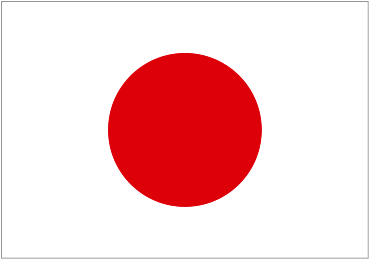 Japan - 日本 (にほん・にっぽん)
Japan - 日本 (にほん・にっぽん)
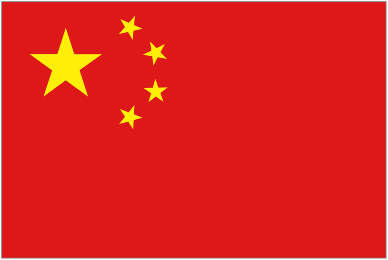 China - 中国 (ちゅうごく)
China - 中国 (ちゅうごく)
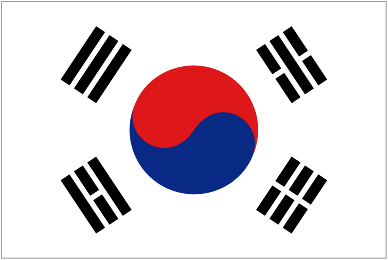 S.Korea - 韓国 (かんこく)
S.Korea - 韓国 (かんこく)
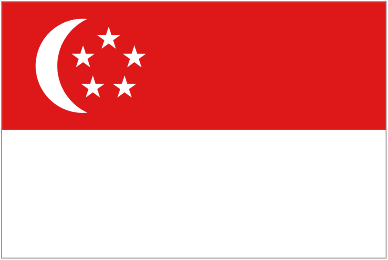 Singapore - 新嘉坡・シンガポール (しんがぽーる) Usually written in katakana
Singapore - 新嘉坡・シンガポール (しんがぽーる) Usually written in katakana
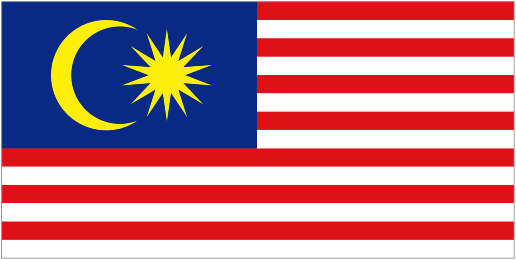 Malaysia - マレーシア (まれーしあ)
Malaysia - マレーシア (まれーしあ)
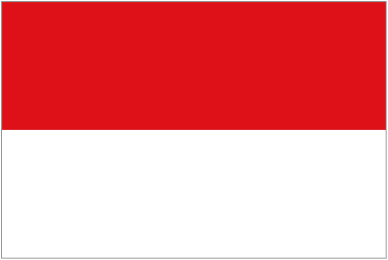 Indonesia - インドネシア (いんどねしあ)
Indonesia - インドネシア (いんどねしあ)
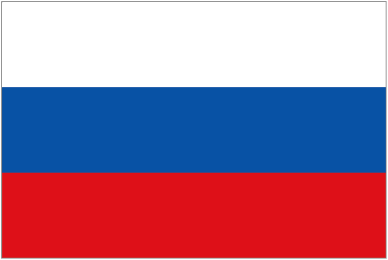 Russia - 露西亜・ロシア (ろしあ) Usually written in katakana
Russia - 露西亜・ロシア (ろしあ) Usually written in katakana
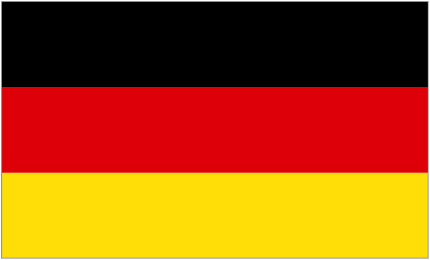 Germany - 独逸・ドイツ (どいつ) Usually written in katakana
Germany - 独逸・ドイツ (どいつ) Usually written in katakana
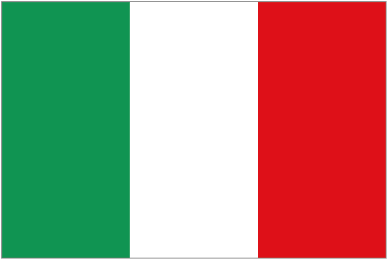 Italy - 伊太利・イタリア (いたりあ) Usually written in katakana
Italy - 伊太利・イタリア (いたりあ) Usually written in katakana
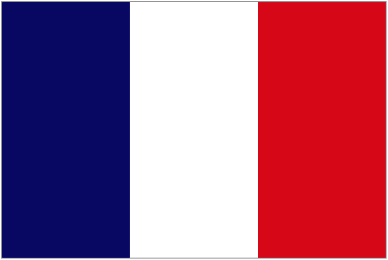 France - 仏蘭西・フランス (ふらんす) Usually written in katakana
France - 仏蘭西・フランス (ふらんす) Usually written in katakana
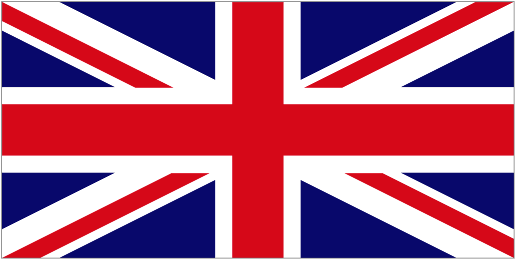 Britian - 英吉利・イギリス (いぎりす) Usually written in katakana
Britian - 英吉利・イギリス (いぎりす) Usually written in katakana
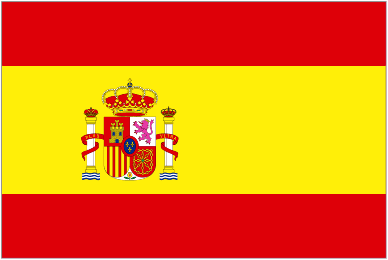 Spain - 西班牙・スペイン (すぺいん)
Usually written in katakana
Spain - 西班牙・スペイン (すぺいん)
Usually written in katakana
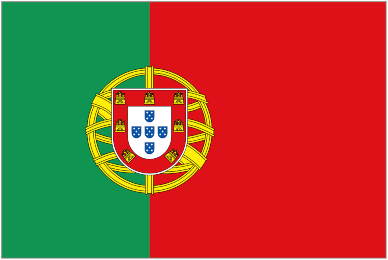 Portugal - 葡萄牙・ポルトガル (ぽるとがる) Usually written in katakana
Portugal - 葡萄牙・ポルトガル (ぽるとがる) Usually written in katakana
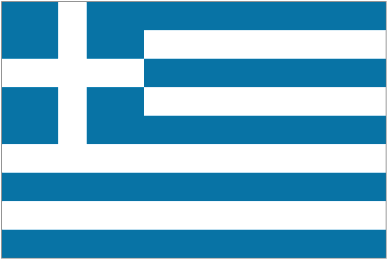 Greece - 希臘・ギリシア (ぎりしあ) Usually written in katakana
Greece - 希臘・ギリシア (ぎりしあ) Usually written in katakana
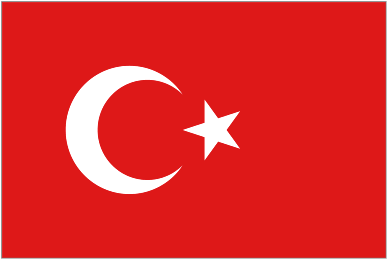 Turkey - 土耳古・トルコ (とるこ ) Usually written in katakana
Turkey - 土耳古・トルコ (とるこ ) Usually written in katakana
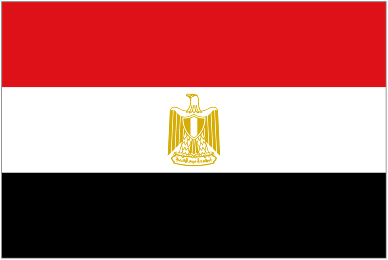 Eygpt - 埃及・エジプト (えじぷと)
Usually written in katakana
Eygpt - 埃及・エジプト (えじぷと)
Usually written in katakana
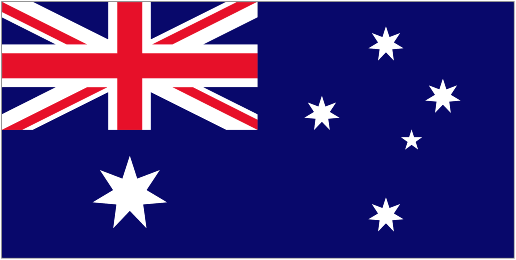 Australia - 豪太剌利・オーストラリア (おーすとらぃあ) Usually written in katakana
Australia - 豪太剌利・オーストラリア (おーすとらぃあ) Usually written in katakana
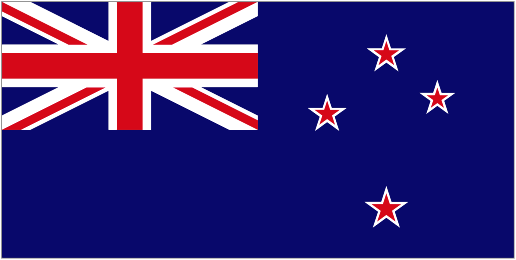 New Zealand - 新西蘭・ニュージーランド (にゅうじいらんど)
New Zealand - 新西蘭・ニュージーランド (にゅうじいらんど)
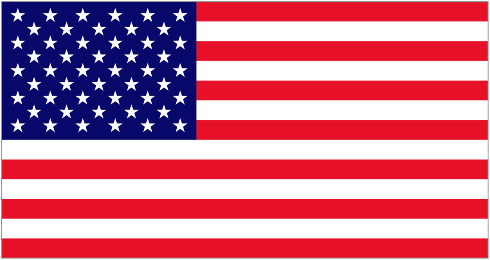 U.S.A - 米国 (べいこく)
U.S.A - 米国 (べいこく)
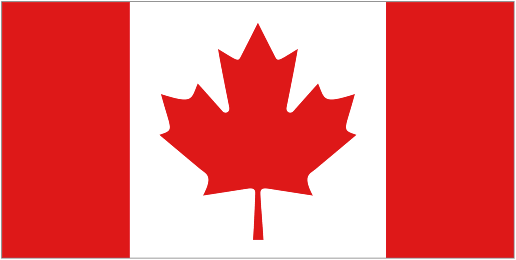 Canada - 加奈陀・カナダ (かなだ) Usually written in katakana
Canada - 加奈陀・カナダ (かなだ) Usually written in katakana
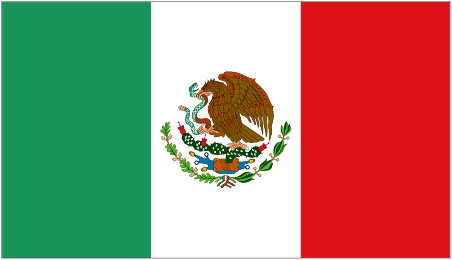 Mexico - 墨西哥・メキシコ (めきしこ) Usually written in katakana
Mexico - 墨西哥・メキシコ (めきしこ) Usually written in katakana
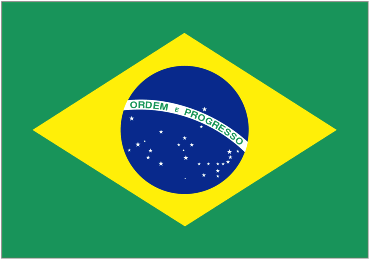 Brazil - 伯剌西爾・ブラジル (ぶらじる) Usually written in katakana
Brazil - 伯剌西爾・ブラジル (ぶらじる) Usually written in katakana
Continent List
Africa - 阿弗利加・アフリカ (あふりか) Usually written in katakana
Asia - 亜細亜・アジア (あじあ) Usually written in katakana
America - 亜米利加・アメリカ (あめりか) Usually written in katakana
Australia - 濠州 (ごうしゅう)
Europe - 欧州 (おうしゅう)
How to add Nationality to a country?
One can say their nationality by adding "人(じん)" as suffix.
For example,
I am a Singaporean.
私 は シンガポール 人 です。
わたし は しんがぽーる じん です。
Continent List
Africa - 阿弗利加・アフリカ (あふりか) Usually written in katakana
Asia - 亜細亜・アジア (あじあ) Usually written in katakana
America - 亜米利加・アメリカ (あめりか) Usually written in katakana
Australia - 濠州 (ごうしゅう)
Europe - 欧州 (おうしゅう)
How to add Nationality to a country?
One can say their nationality by adding "人(じん)" as suffix.
For example,
I am a Singaporean.
私 は シンガポール 人 です。
わたし は しんがぽーる じん です。
Friday, June 8, 2012
Documentary Video on Samurai Sword (Eng)
Part 1
The rest of the links are as of follows:
Part 2 : http://youtu.be/pT2gUgHfmtc
Part 3
: http://youtu.be/5pJfC_HNFdY
Part 4
: http://youtu.be/s4yaQDwxoaE
Part 5
: http://youtu.be/m-PgkNst5qY
See how the Samurai Swords of Japan are being made as well!
The pride of sword and how its unique production makes Samurai sword so unique!!!
Wednesday, June 6, 2012
Question Words
Basic Question words - 6W1H
- Who:誰(だれ)
- What:何(なに・なん)*
- When: 何時(いつ)
- Where: 何処(どこ)
- Which:どの
- Why:如何して(どうして)
- How:どうやって
- なに - General use other than rule 2 and 3
- なん - When using 何 ですか with the purpose of asking 「What is this (N)?」
- なんの - When の is added, it becomes what kind
- By adding の to だれ, the question will which from who to whose in the question. Refer to Lesson 2a Possessive Noun.
Sunday, June 3, 2012
Basic Colour List
いAdj
のAdj・Noun
*For Blue or Green colour, we usually use 青い(あおい). However, there are times where green is 緑(みどり) instead.
Do you know that you can make your color into light colour by adding a prefix?
Prefixed : Light+Colour
Light - 薄 (うす)
Example: 薄紅 (うすくれない) means light red colour
What about dull/dark colour?
There's an adjective as well for dull colour - 暗い(くらい).
If you want dull red colour, all you do is
暗い(くらい) + 赤い(あかい) = 暗い赤い(くらいあかい)
- White - 白い(しろい) shiroi
- Black - 黒い(くろい) kuroi
- Red - 赤い(あかい)akai
- Blue/Green* - 青い(あおい) aoi
- Brown - 茶色い(ちゃいろい)
- Yellow - 黄色い(きいろい)
- Green - 緑(みどり)
- Pink - ピンク(ぴんく)
- Pink - 桃色(ももいろ)
- Purple - 紫(むらさき)
- Crismon Red - 紅(くれない・べに・こう)
- Orange - 橙色(だいだいいろ)
- Sliver - 銀色(ぎんいろ)
- Gold - 金色(きんいろ)
- Grey - 灰色・グレー(はいいろ・ぐれー)
Do you know that you can make your color into light colour by adding a prefix?
Prefixed : Light+Colour
Light - 薄 (うす)
Example: 薄紅 (うすくれない) means light red colour
What about dull/dark colour?
There's an adjective as well for dull colour - 暗い(くらい).
If you want dull red colour, all you do is
暗い(くらい) + 赤い(あかい) = 暗い赤い(くらいあかい)
Friday, June 1, 2012
Common Japanese symbols punctuation
読点 : とうてん Tōten
Symbol ( 、)=> Comma mark - Instead of symbol (,), Japanese language use this symbol instead.
句点 : くてん Kuten
Symbol (。) => Punctuation Mark - Instead of symbol (.), Japanese language use this symbol instead.
中黒 : なかぐろ Nakaguro
Symbol (・) => Interpunct - Used for separating Japanese words/titles/names or items to aid reading
鍵 :かぎ Kagi
Symbol (「」) => Single quotation marks
二重鉤括弧 : にじゅうかぎかっこ Nijūkagikakko
Symbol (「...『...』...」) => Double quotation marks (to be only used within single quotation marks)
感嘆符 : かんたんふ Kantanfu
Symbol (! ) => Exclamation Mark - However, interesting enough, exclamation mark isn't common used in formal sentences as one thinks. They are usually used in casual writing, fiction and manga.
疑問符 : ぎもんふ Gimonfu or commonly known はてな Hatena
Symbol (?) => Question Mark - Another symbol that is not commonly used in formal sentences but commonly used in casual writing, fiction and manga.
濁点 : だくてん Dakuten or commonly known as てんてん tenten
Symbol (゛) => Used with both hiragana and katakana to indicate a voiced sound. For example, ta (た) becomes da (だ), shi (し) becomes ji (じ). For full list of dakuten wordings, please refer to hiragana and katakana list
半濁点 : はんだくてん Handakuten or commonly known as ○・丸 maru
Symbol (゜) => Used with hiragana and katakana to indicate a change from a ha hi fu he ho sound to a pa pi pu pe po sound.
同の字点 : どうのじてん Dō no jiten or commonly known ノマ Noma
Symbol (々) => Kanji repetition mark.
郵便 : ゆうびんYuubin
Symbol (〒) => Postal sign used in Japan
Extracted from:
http://en.wikipedia.org/wiki/Japanese_typographic_symbols
http://en.wikipedia.org/wiki/Japanese_punctuation
Symbol ( 、)=> Comma mark - Instead of symbol (,), Japanese language use this symbol instead.
句点 : くてん Kuten
Symbol (。) => Punctuation Mark - Instead of symbol (.), Japanese language use this symbol instead.
中黒 : なかぐろ Nakaguro
Symbol (・) => Interpunct - Used for separating Japanese words/titles/names or items to aid reading
鍵 :かぎ Kagi
Symbol (「」) => Single quotation marks
二重鉤括弧 : にじゅうかぎかっこ Nijūkagikakko
Symbol (「...『...』...」) => Double quotation marks (to be only used within single quotation marks)
感嘆符 : かんたんふ Kantanfu
Symbol (! ) => Exclamation Mark - However, interesting enough, exclamation mark isn't common used in formal sentences as one thinks. They are usually used in casual writing, fiction and manga.
疑問符 : ぎもんふ Gimonfu or commonly known はてな Hatena
Symbol (?) => Question Mark - Another symbol that is not commonly used in formal sentences but commonly used in casual writing, fiction and manga.
濁点 : だくてん Dakuten or commonly known as てんてん tenten
Symbol (゛) => Used with both hiragana and katakana to indicate a voiced sound. For example, ta (た) becomes da (だ), shi (し) becomes ji (じ). For full list of dakuten wordings, please refer to hiragana and katakana list
半濁点 : はんだくてん Handakuten or commonly known as ○・丸 maru
Symbol (゜) => Used with hiragana and katakana to indicate a change from a ha hi fu he ho sound to a pa pi pu pe po sound.
同の字点 : どうのじてん Dō no jiten or commonly known ノマ Noma
Symbol (々) => Kanji repetition mark.
郵便 : ゆうびんYuubin
Symbol (〒) => Postal sign used in Japan
Extracted from:
http://en.wikipedia.org/wiki/Japanese_typographic_symbols
http://en.wikipedia.org/wiki/Japanese_punctuation
Thursday, May 31, 2012
新いれラベルがある!
みんなさん、今日は!
はじめるのノートのLesson 1がどうですか。
簡単ですか、難しいですか? 教えてください。
新しいのラベルがあって、見てみてくださいね!
「お宅の好きな」というと在ります。
沢山のアニメや漫画などがありますよ!
楽しんでください!
Hi Folks,
How do you find my Lesson 1 notes?
Is it easy? Hard? Please do let me know as I go along.
There's a new label by the right hand corner, please try to take a look.
Known as Otaku's favourites, I had put up tons of manga/animes/drama/movie related links there.
Enjoy! (^^,)//
はじめるのノートのLesson 1がどうですか。
簡単ですか、難しいですか? 教えてください。
新しいのラベルがあって、見てみてくださいね!
「お宅の好きな」というと在ります。
沢山のアニメや漫画などがありますよ!
楽しんでください!
Hi Folks,
How do you find my Lesson 1 notes?
Is it easy? Hard? Please do let me know as I go along.
There's a new label by the right hand corner, please try to take a look.
Known as Otaku's favourites, I had put up tons of manga/animes/drama/movie related links there.
Enjoy! (^^,)//
Lesson 1b - Space / Distance Concept
Space concept : This・That・Over There
これ・それ・あれ は N・Adj です。- This/That/Over there is N・Adj.
それ - Referring to N that is within reach of listener.
あれ - Referring to N that is out of reach of both speaker and listener.
Question and Answering
Q: これ・それ・あれ は N・Adj ですか。
Is This/That/Over there N?
Y: はい、これ・それ・あれ は N・Adj です。
Yes, This/That/Over there is N.
N: いいえ、これ・それ・あれ は N・Adj ではありません。
No, This/That/Over there is not N.
Ali: What is this?
アンナ: それ は かさ です。
Anna: That is an umbrella.
~~~~~~~~~~~~~~~~~~~~~~~~~~~~~~~~~~~~~~~~~~~~~~~~~~~~~~~~~~~~~~~~~~~~~~
Space concept : This・That・Over There
- TThis/That/That(Over there) N1 is N2・Adj.
その - Referring to N that is within reach of listener.
あの - Referring to N that is out of reach of both speaker and listener.
Question and Answering
Q: N1 は どの ですか。
Is This/That/That(Over there) N1 N2・Adj?
A: N1 は この・その・あの (N2) です。
This/That/That(Over there) N1 is N2・Adj.
 Example on question and answer.
Example on question and answer.アンナ: アリさんのかさ は どの かさ ですか。
Anna: Which umbrella is Ali's umbrella?
アり: 私のかさ は この あおい(かさ) です。
Ali: My umbrella is this blue one.
Place concept : Here・There・Over There
ここ・そこ・あそこ は Pl です。
- This/That/Over there is Pl.
そこ - Referring to a place that is within reach of listener.
あそこ - Referring to a place that is out of reach of both speaker and listener.
Question and Answering
Q1: ここ・そこ・あそこ は なん ですか。
What is this/that/over that place?
A1: ここ・そこ・あそこ Pl です。
Here/There/Over there is Pl.
Q2: N は どこ ですか。
Where is N?
A2: N は ここ・そこ・あそこ です。
N is Here/There/Over there.
子(こ) : あそこ は なん ですか。
Son : What is the place over there?
父(ちち): あそこ は びょういん です。
Father : The place over there is a hospital
子(こ) : かんごし は どこです か。
Son : Where is the nurse?
父(ちち): かんごし は あそこ です。
Father : The nurse is over there.
Wednesday, May 30, 2012
Lesson 1a - Basic Japanese Sentence Structure
Basic Sentence Structure
N1 は N2・Adj です。
は - Topic Marker. When used as topic marker は is pronounced as 「wa」instead of「ha」.
も - Also
です - Used at the end of the sentence for polite positive sentence structure ending with N・Adj.
ではありません - Used at the end of the sentence for polite negative sentence structure ending with N・Adj
か - By add 「か」at the end of the sentence, the entire sentence becomes a question sentence.
Example on basic Japanese sentence structure
わたし は シンガポールじん です。
Y: はい、N1はN2・Adjです。Yes, N1 is N2・Adj.
N: いいえ、N1はN2・Adjではありません。No, N1 is not N2・Adj
Example on basic question and answers.
Q: (あなた) は がくせい ですか。Are you a student?
Y: はい、(わたし) は がくせい です。Yes, I am a student.
N: いいえ、(わたし) は がくせい ではありません。No, I am not a student.
During a real Japanese conversation, I (わたし) and you (あなた) are often omitted.
A Japanese language speaker will usually use listener's name instead of あなた as it is consider offensive.
N1 は N2・Adj です。
- N1 is N2・Adj
- N1 is also N2・Adj
- N1 is not N2・Adj
- Is N1 N2・Adj?
も - Also
です - Used at the end of the sentence for polite positive sentence structure ending with N・Adj.
ではありません - Used at the end of the sentence for polite negative sentence structure ending with N・Adj
か - By add 「か」at the end of the sentence, the entire sentence becomes a question sentence.
- I am a Singaporean
- My elder brother is also a Singaporean.
- Lisa is not a Singaporean.
- Is Lisa an American?
Basic Question and Answering
Q: N1はN2・Adjですか。Is N1 N2・Adj?N: いいえ、N1はN2・Adjではありません。No, N1 is not N2・Adj
Q: (あなた) は がくせい ですか。Are you a student?
N: いいえ、(わたし) は がくせい ではありません。No, I am not a student.
During a real Japanese conversation, I (わたし) and you (あなた) are often omitted.
A Japanese language speaker will usually use listener's name instead of あなた as it is consider offensive.
Tuesday, May 29, 2012
Pause Pronounication Sounds!
Small tsu is known as 促音(そくおん)
- Soukon commonly known as small tsu or chiisai tsu or chisana tsu is actually a small pause pronounication sound inbetween a word.
- The sokuon cannot appear at the beginning of a word, before a vowel kana (a, i, u, e, or o), or before kana that begin with the consonants n, m, r, w, or y. In addition, it does not appear before voiced consonants (g, z, d, or b), or before (single), except in loanwords, or distorted speech, or dialects.
- Personal thoughts: meaning that it can only appear before consonants k, s, t, h.
Differenece between the size of normal tsu and small tsu
| Full-sized | Sokuon | |
|---|---|---|
| Hiragana | つ | っ |
| Katakana | ツ | ッ |
Long pause in katakana is known as 長音符(ちょうおんぷ)
- Its form is a horizontal or vertical line in the center of the text with the width of one kanji or kana character. It is written horizontally (ー) in horizontal text and vertically in vertical text. The chōonpu is usually used to indicate a long vowel sound in katakana writing, rarely in hiragana writing, and never in romanized Japanese. The chōonpu is a distinct mark from the dash, and in most Japanese typefaces it can easily be distinguished.
- Personal thoughts: meaning that usually it is writen for katakana - foreign objects name.
Example of Pause sounds of similar words:
Slope : 坂(さか) sakaWriter : 作家(さっか) sakka
Scoccer : サーカー(さーかー) sa-ka-
Refer to :
Friday, May 25, 2012
Understanding Japanese Writing System
Japanese have 3 type of writing style - Hiragana, Katakana and Kanji.
To start off, most non-native Japanese will learn Hiragana 1st before moving on to Katakana and Kanji. However, interesting to note that most native Japanese might start off learning Katakana and Hiragana at the same time during their kindergarden days.
Hiragana - 平仮名(ひらがな)
Hiragana is the basic form of writing Japanese similar to English basic A-B-C
Example : a, i, u, e, o (あ, い, う, え, お).
To form a word, you need to join the hiragana together like the sentence "I am ____ " - "watashi wa ____." (わたし は _____ です。)
Katakana - カタカナ(かたかな)
Katakana is the writing style for foreign object/names like camera カメラ.
Example : a, i, u, e, o (ア,イ,ウ,エ,オ).
Generally, items that is imported into Japan are adopted using Katakan like
ラメン - ramen (China),
パン - pan (means bread in French),
アルバイト - arubaito (Arbeit means part time job in German).
Foreigners learning Japanese, generally write their name in Katakana.
Kanji - 漢字(かんじ)
Kanji is the Chinese character writing style that migrate from China to Japan
Example : watashi - 私 (also can be written in hiragana as わたし as a break down for people who don't understand Kanji). Generally, Kanji is a set of words form from hiragana.
Furigana - 振り仮名(ふりがな)
Japanese generally write their name in Kanji with same hirgana above or below to aid with pronouncation as Kanji might have multiple pronouncation. The same hiragana used for reading aid is known as furigana.
Kanji vs Chinese Characters
A lot of people ask this on Yahoo Answers where I used to be very active in giving out answers and asking questions. I also posed this same question to my 1st sensei before on the difference on Chinese characters and Kanji.
As far as I understand, Kanji and Chinese characters have up to 70% similarity in meanings. Meaning a Chinese might be able to understand Japanese without learning Japanese! However, some Kanji have totally different meaning to their Chinese counterparts. For example, Kanji characters like 勉強(べんきょう) means study but same Chinese characters means compel!
Therefore, it is still advisable for Chinese students who are learning Japanese to be able to differentiate the meanings to avoid confusion.
Romanji ロマン字(ろまんじ)
Most non native Japanese learners started off with Romanji, which is the English alphabets of the Japanese pronouncement. However, it is strongly to recommend one to move off to Hiragana and Katakana as soon as possible. In most Japanese language school, sensei (Japanese teacher) will only use Romanji during Elementary class and will drop almost entirely of Romanji by the end of the course.
Hope with this mini explanation of Japanese writing system, you can understand Japanese better!!!
Cya and stay tune for my 1st Grammer lesson in Japanese!!! (^u^)'')
To start off, most non-native Japanese will learn Hiragana 1st before moving on to Katakana and Kanji. However, interesting to note that most native Japanese might start off learning Katakana and Hiragana at the same time during their kindergarden days.
Hiragana - 平仮名(ひらがな)
Hiragana is the basic form of writing Japanese similar to English basic A-B-C
Example : a, i, u, e, o (あ, い, う, え, お).
To form a word, you need to join the hiragana together like the sentence "I am ____ " - "watashi wa ____." (わたし は _____ です。)
Katakana - カタカナ(かたかな)
Katakana is the writing style for foreign object/names like camera カメラ.
Example : a, i, u, e, o (ア,イ,ウ,エ,オ).
Generally, items that is imported into Japan are adopted using Katakan like
ラメン - ramen (China),
パン - pan (means bread in French),
アルバイト - arubaito (Arbeit means part time job in German).
Foreigners learning Japanese, generally write their name in Katakana.
Kanji - 漢字(かんじ)
Kanji is the Chinese character writing style that migrate from China to Japan
Example : watashi - 私 (also can be written in hiragana as わたし as a break down for people who don't understand Kanji). Generally, Kanji is a set of words form from hiragana.
Furigana - 振り仮名(ふりがな)
Japanese generally write their name in Kanji with same hirgana above or below to aid with pronouncation as Kanji might have multiple pronouncation. The same hiragana used for reading aid is known as furigana.
Kanji vs Chinese Characters
A lot of people ask this on Yahoo Answers where I used to be very active in giving out answers and asking questions. I also posed this same question to my 1st sensei before on the difference on Chinese characters and Kanji.
As far as I understand, Kanji and Chinese characters have up to 70% similarity in meanings. Meaning a Chinese might be able to understand Japanese without learning Japanese! However, some Kanji have totally different meaning to their Chinese counterparts. For example, Kanji characters like 勉強(べんきょう) means study but same Chinese characters means compel!
Therefore, it is still advisable for Chinese students who are learning Japanese to be able to differentiate the meanings to avoid confusion.
Romanji ロマン字(ろまんじ)
Most non native Japanese learners started off with Romanji, which is the English alphabets of the Japanese pronouncement. However, it is strongly to recommend one to move off to Hiragana and Katakana as soon as possible. In most Japanese language school, sensei (Japanese teacher) will only use Romanji during Elementary class and will drop almost entirely of Romanji by the end of the course.
Hope with this mini explanation of Japanese writing system, you can understand Japanese better!!!
Cya and stay tune for my 1st Grammer lesson in Japanese!!! (^u^)'')
Subscribe to:
Comments (Atom)











